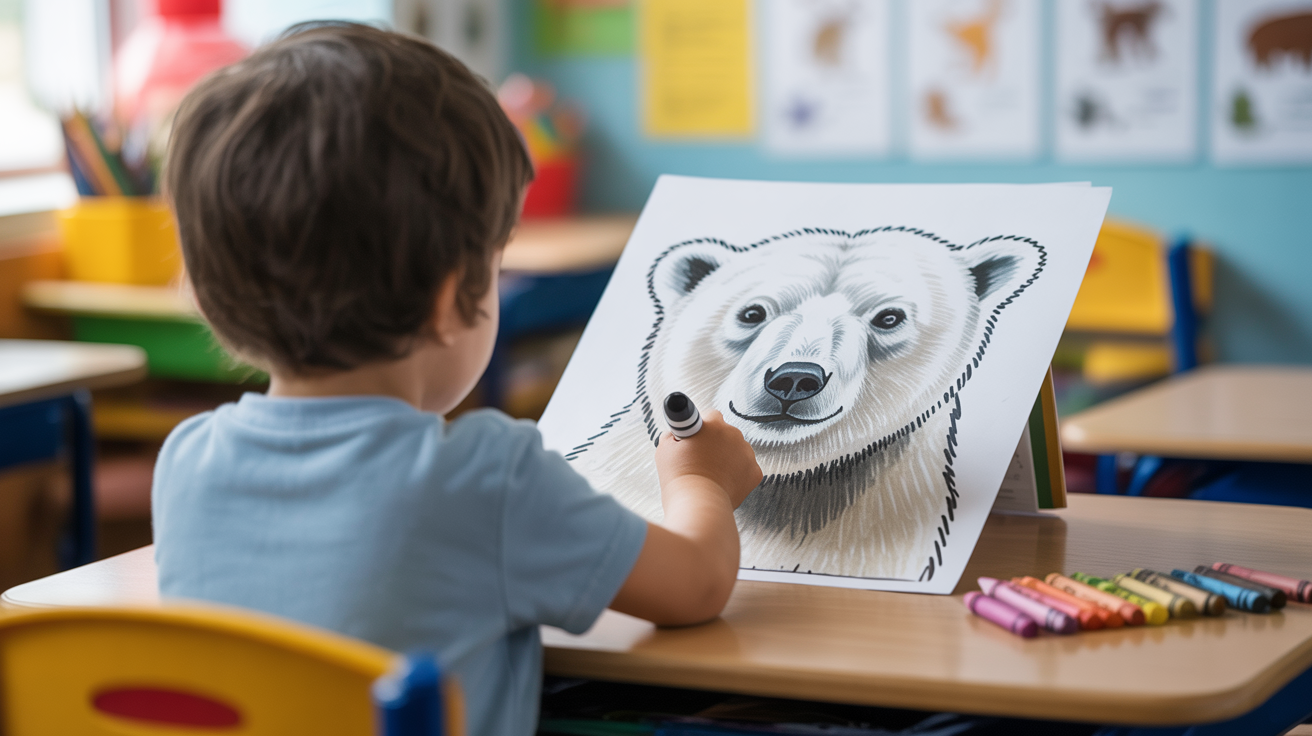Kids love art. But many parents and teachers worry when the child gets stuck while drawing animals.
However, directed drawing offers a simple solution that breaks down complex shapes into basic steps.
This method helps children build confidence in their art skills through clear guidance. Polar bears make excellent subjects for young artists; their white fur and simple shapes create quick success.
This blog will show you how to lead a polar bear directed drawing session that kids will enjoy.
The Benefits of Directed Drawing for Kids
Directed drawing gives children a clear path to success in art.
When kids follow simple steps to create a picture that looks good, they feel a sense of achievement. This builds trust in their skills and makes them more willing to try new art forms.
Drawing with guidance helps small hands gain control. As children hold pencils and make careful lines, they improve their hand-eye coordination.
The focus needed to follow each step also helps lengthen attention spans in young artists.
This method is useful because it works for kids of all skill levels. The basic shapes used in directed drawing teach important art concepts like proportion and spacing without formal lessons, making learning fun rather than forced.
Tips for Successful Polar Bear Drawing
When guiding children through a polar bear drawing, start with the basics. Show them how a polar bear is just circles and ovals put together. Let each child work at their own speed.
Praise effort, not just results. Allow kids to add snow, ice, or their own special marks to make each drawing one of a kind.
Here are some quick tips to help them draw a polar bear directed drawing easily:
- Use light pencil lines first that can be fixed easily.
- Keep examples visible for kids to check.
- Focus on shapes, not perfect lines.
- Offer help without taking over.
- Display finished work to build pride.
- Make it fun with facts about polar bears.
Step-by-Step Polar Bear Directed Drawing Tutorial
Now that we know what makes polar bears special, let’s put pencil to paper.
These steps will help you lead a fun drawing activity that turns simple shapes into a cute polar bear. Even young artists will feel successful with these clear directions for polar bear directed drawing.
1. Gather Your Materials
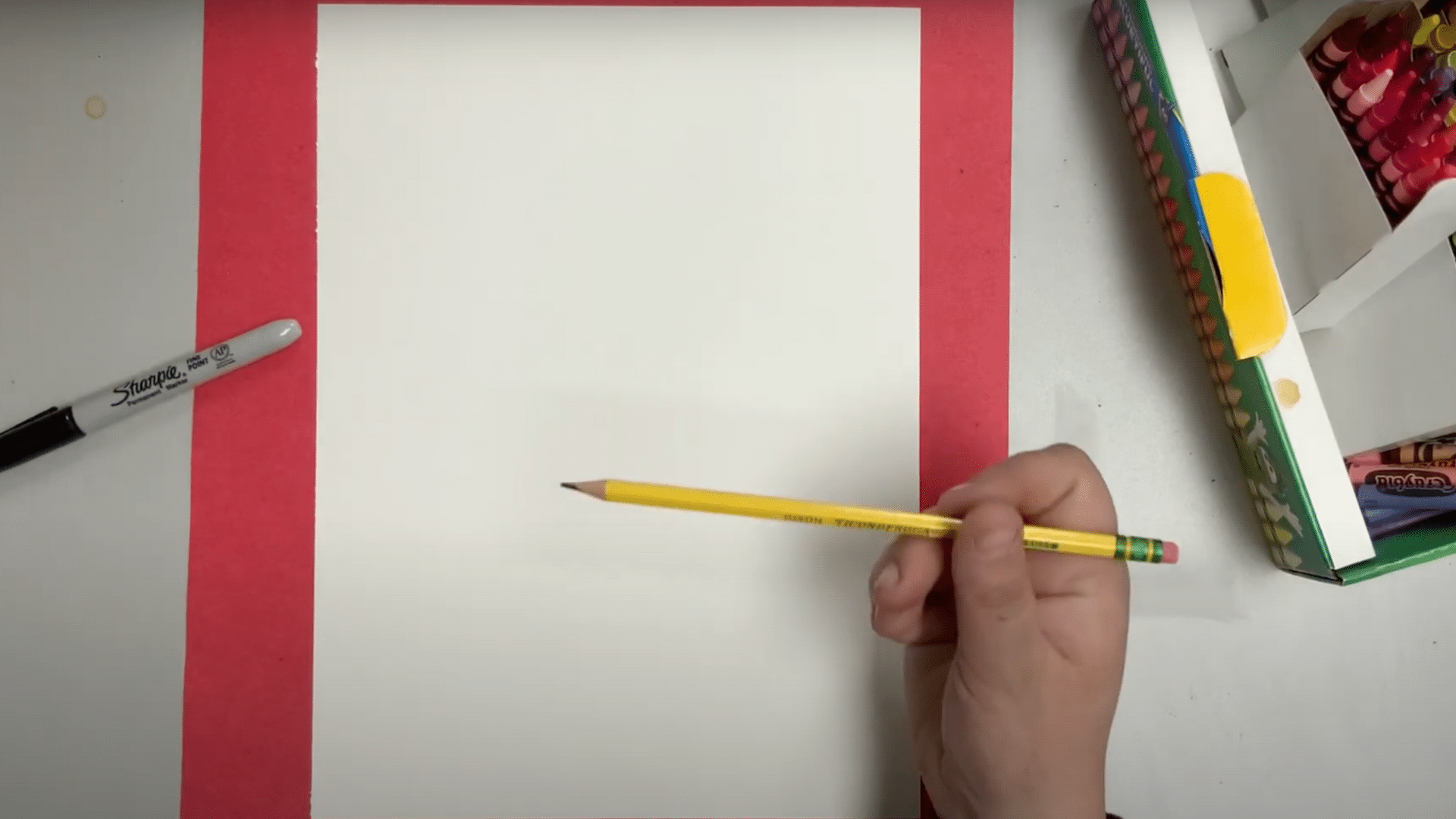
Before you begin drawing your polar bear, it’s essential to gather all the materials you’ll need. Having everything ready will ensure a smooth drawing process. Here’s what you’ll need:
- Sharpie or Black Marker: Use a Sharpie to outline your drawing and make the lines bold and clear. This will help your polar bear stand out.
- Pencil: Perfect for sketching the initial shapes. Using a pencil lets you make adjustments as you go, which is great for beginners or if you want to perfect your bear’s features.
- Paper: Any drawing paper will work, but make sure it’s sturdy enough to handle the ink.
- Coloring tools: You can use crayons.
2. Draw the Polar Bear’s Paws

Start by drawing two half-ovals at the bottom of the paper, about two to three finger spaces apart. These will become the paws of the polar bear. Make sure the ovals are slightly curved to form a natural, rounded shape.
3. Sketch the Body
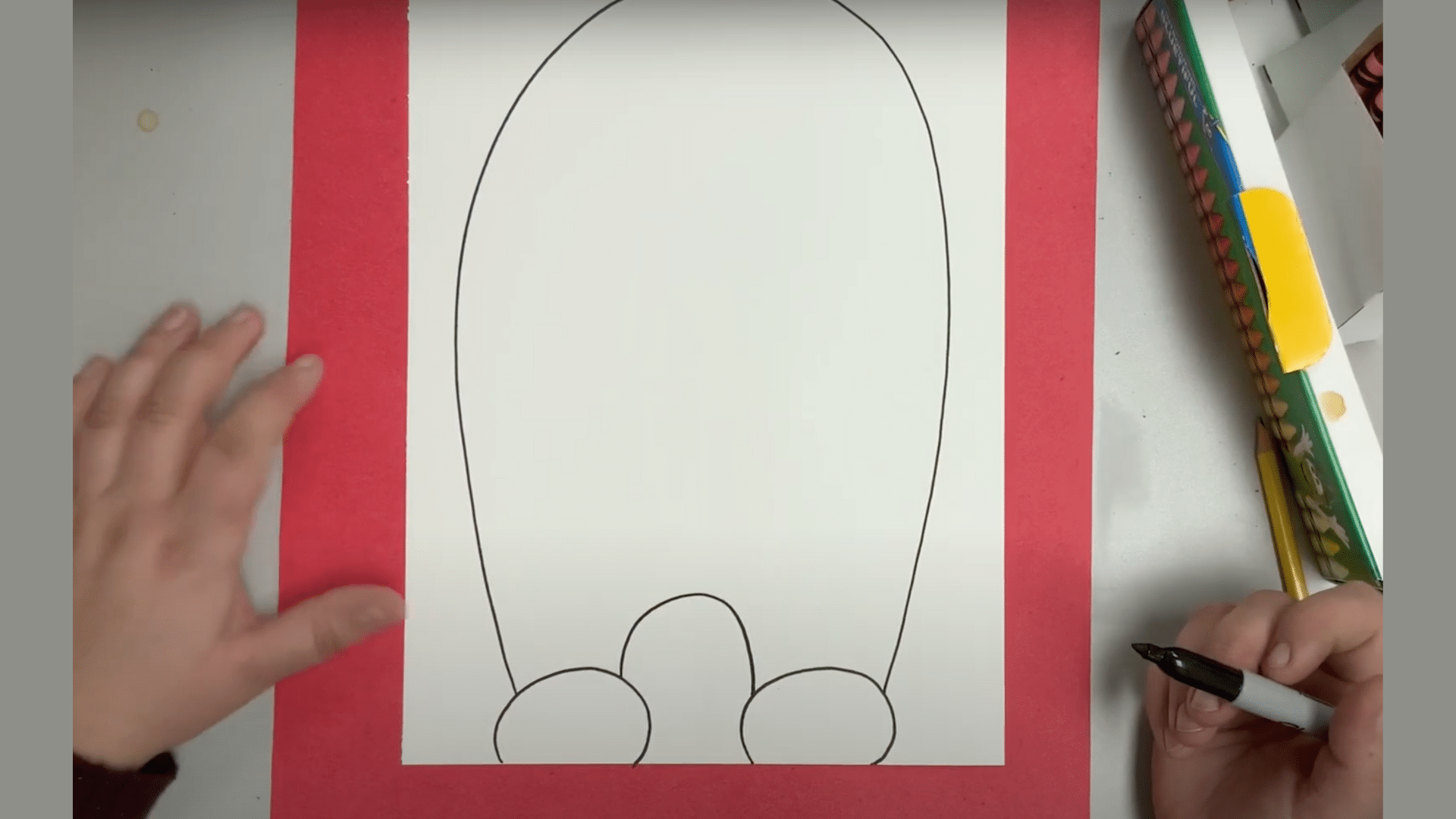
Next, draw a large oval shape starting about one finger space from the bottom of the paper. The oval should curve upward, stretching to the top of your paper, but don’t close the oval completely to avoid it going off the page.
4. Add the Head

Now, draw a large circle inside the body for the polar bear’s head. It should be big, as polar bears have large heads compared to their bodies.
5. Draw the Ears and Facial Features
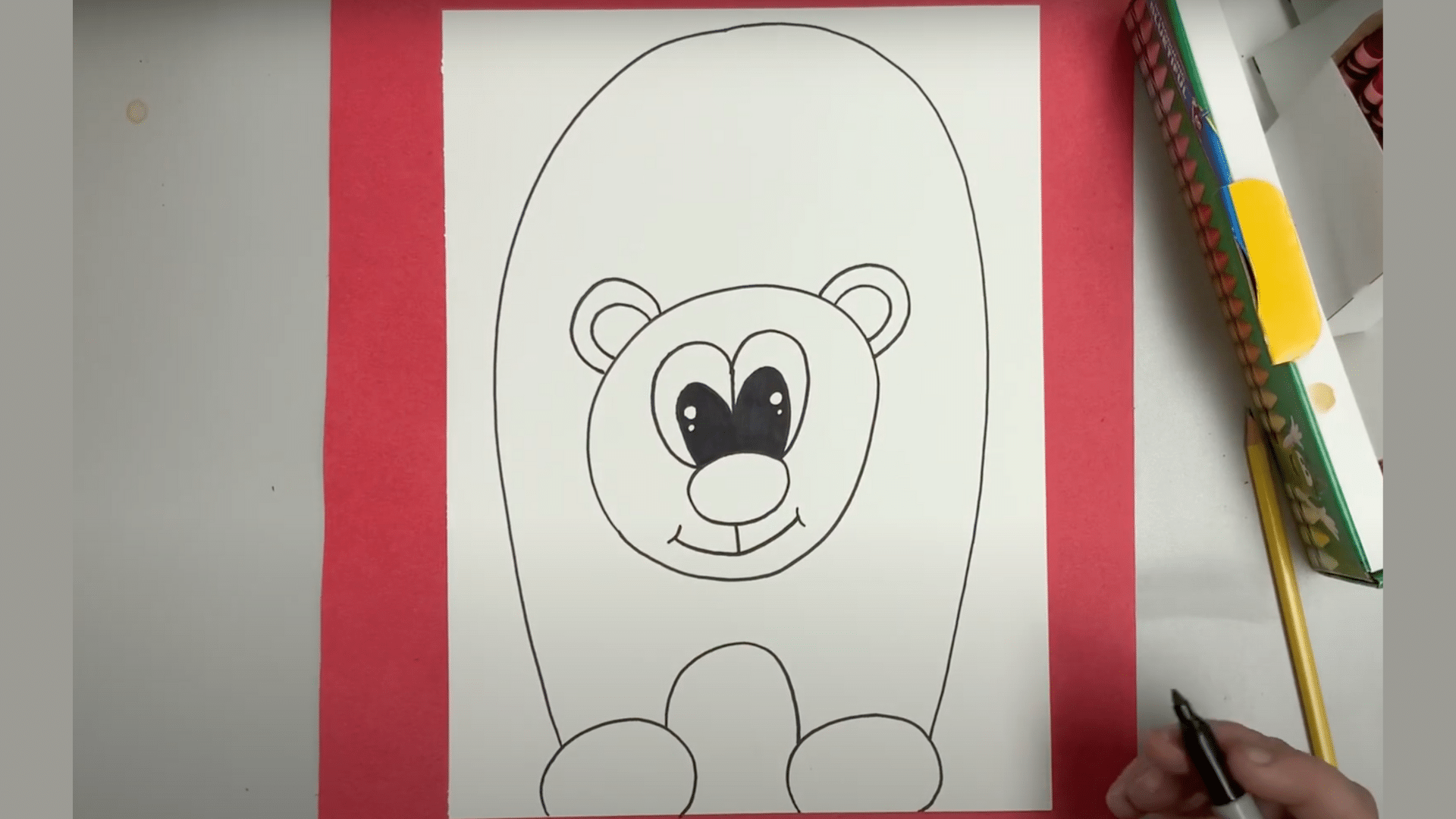
For the ears, draw two half-circles on top of the head, one on each side. Then, draw a smaller half-circle inside each ear. Draw a small oval for the nose inside the face, and add a smile by drawing a curved line beneath it.
To create friendly eyes, draw large, circular eyes with smaller circles inside. Add a mini circle under each eye to make them look bright and cute.
6. Add Details to the Paws and Snow

Draw curved lines to form the individual toes on each paw. For the ground, draw a slightly wavy line beneath the polar bear to represent snow.
You can also draw some snowflakes in the background by starting with a simple “T” or “X” shape and adding small lines or dots at the ends.
7. Color Your Polar Bear
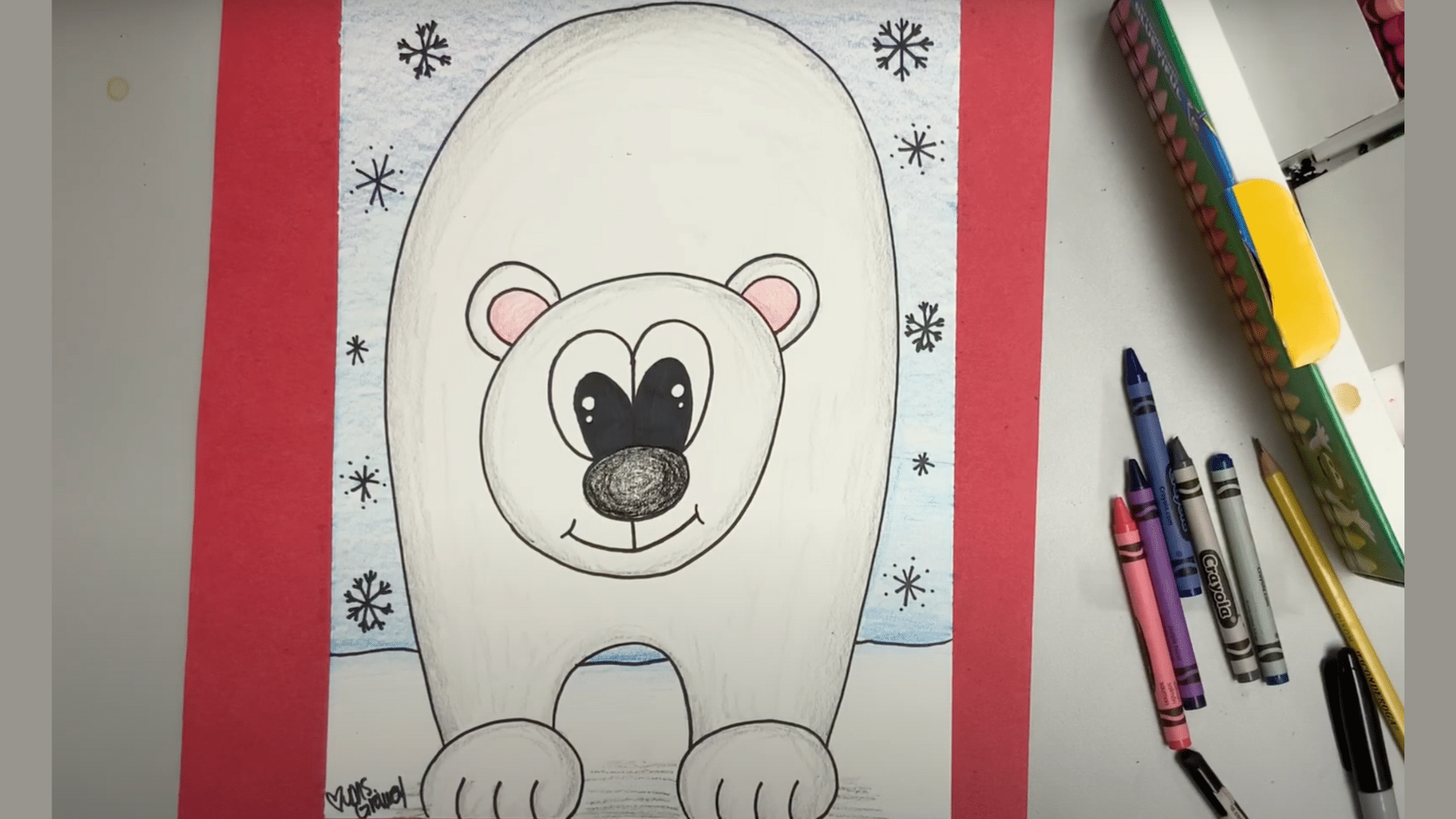
Now for the fun part, coloring! While polar bears are typically white, give your bear a subtle gray outline to make it stand out.
For the snow, you can use light blues and whites. Use darker blues for the sky to create a cool, wintry scene. Don’t forget to add shading for a more realistic effect!
You can also add any personal touches, like a scarf or a winter hat, to make your bear unique.
Creative Polar Bear Drawing Ideas to Try
Once kids master the basic polar bear directed drawing, they might want to try something new. Here are some ways to change up the activity and keep young artists engaged.
These ideas help children add their special touch to their polar bear pictures.
1. A Happy Polar Bear Drawing
2. Polar Bear Directed Drawing Idea
3. Polar Bear in the Snow Drawing
4. Baby Polar Bear and Its Mother Drawing
Fun Polar Bear Facts for Kids
Polar bears intrigue kids and adults alike with their special skills and habits. Learning about these fantastic animals adds extra fun to drawing activities.
These facts can help in starting conversations while children work on their art projects.
- Polar bears have black skin under their white fur that helps them soak up the sun’s heat.
- A polar bear’s fur isn’t actually white; each hair is clear and hollow, which reflects light and makes them look white.
- These bears can swim for days at a time and have been spotted more than 200 miles from land.
- Polar bears clean themselves by rolling in snow.
- They have a strong sense of smell and can detect seals under 3 feet of ice.
- Baby polar bears are born smaller than human babies, about the size of a guinea pig.
- Polar bear paws can be 12 inches wide, which helps them walk on thin ice without falling through.
- Unlike other bears, polar bears do not truly hibernate in winter.
Wrapping It Up
Directed drawing offers a wonderful way to help children create art they feel proud of. By breaking a polar bear into simple shapes, kids learn how to tackle complex subjects one step at a time.
The most important part of any drawing activity is creating a positive experience.
So grab some paper and pencils, share some polar bear facts, and watch young artists light up as their bears take shape.
Have you tried directed drawing with your kids or students?

